![]() Do you wish you could keep an eye on your kids when they borrow the family car or know where your fleet of work trucks are at any time? A GPS-based tracking system is an easy way to keep tabs on your vehicle. In this article, we’ll discuss some of the options for vehicle locating and tracking systems and, of course, explain how they work.
Do you wish you could keep an eye on your kids when they borrow the family car or know where your fleet of work trucks are at any time? A GPS-based tracking system is an easy way to keep tabs on your vehicle. In this article, we’ll discuss some of the options for vehicle locating and tracking systems and, of course, explain how they work.
How Does GPS Vehicle Tracking Work?


A tracking module contains three primary components. First and foremost, a CPU controls the system. The CPU runs software that communicates with the rest of the hardware on the device. The next important component is a GPS receiver and antenna. The GPS receiver provides the CPU with the location, velocity and altitude of the vehicle. Third is a cellular radio. The cellular radio communicates with a server to store information about the vehicle’s location and operation.
GPS tracking systems communicate with the server at predetermined intervals based on the service package you have chosen. These intervals could be one, three, five or 20 minutes, or on-demand as required. More frequent updates use more cellular data and are typically associated with more expensive tracking service packages.
Tracking Hardware Options
![]() Some tracking systems include additional features such as inputs for seat belts and doors, accelerometers to log sudden acceleration and braking, RFID fob readers to identify drivers and A/V inputs so you can see and hear what’s going on in the vehicle. Some premium hardware solutions include a lithium ion backup battery so the system will continue to function even if the vehicle battery is disconnected or completely dead. Other systems with integrated solar panels are available for trailers or infrequently used equipment. If you need a solution that can handle getting wet or dirty, tracking hardware is available in an IP65-rated water- and dust-resistant enclosure.
Some tracking systems include additional features such as inputs for seat belts and doors, accelerometers to log sudden acceleration and braking, RFID fob readers to identify drivers and A/V inputs so you can see and hear what’s going on in the vehicle. Some premium hardware solutions include a lithium ion backup battery so the system will continue to function even if the vehicle battery is disconnected or completely dead. Other systems with integrated solar panels are available for trailers or infrequently used equipment. If you need a solution that can handle getting wet or dirty, tracking hardware is available in an IP65-rated water- and dust-resistant enclosure.
Custom solutions are available for specific applications. If you operate a fleet of waste removal vehicles, you can log each time they lift a bin. The same logic applies to tow trucks, snow plows and, of course, delivery vehicles. Custom sensors and switches can interact with the logging system to store and log almost any conceivable function. Perhaps you have an armored car service and need a panic button – that’s an easy solution.
Tracking Interface Options
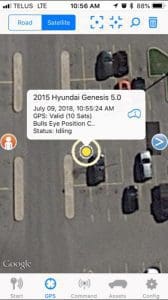

Two interface options are available, depending on your needs. For most consumers, an app on your smartphone is available to let you see the location of your vehicle. In most cases, the location is overlaid on Google or Apple maps so you can understand the vehicle location graphically. In most cases, the location is accurate to within about 25 feet of where the vehicle actually is. If the GPS receiver receives signals from enough satellites, the accuracy can be even better.
For clients using their tracking system for business applications, most services provide a web-based interface that can show you the location of your entire fleet and allow you to configure warnings and reports.
Software-Based Features for Consumers

Consumer tracking solutions typically offer five or six software-based features. These include geofencing and over-speed alert, as well as tow alerts and after-hours motion alerts. Geofencing is an alert option that will let the operator know when the vehicle enters or exits a particular geographical area. In most cases, this feature is configured by placing a pin or marker at a location and identifying a boundary radius in miles around that position. Depending on how it’s configured, a warning is displayed on the operator’s smartphone when the vehicle enters or exits this area. Over-speed alerts are easy to understand. The operator configures a maximum speed for the system and will receive a notification if that speed is exceeded.
Two advanced features are the tow and after-hours motion alerts. The after-hours alert will send a warning if the vehicle moves during a preset time. If you never drive your vehicle after midnight and are rarely up before 6 a.m., you can set an alert to let you know if your vehicle moves during that period. Tow alerts are another great feature that helps alert the operator to potential vehicle theft. You will receive a tow alert when the vehicle moves without the ignition being turned on.
Business Applications and Features
![]() For business owners, knowing how your vehicles are operated is as important as knowing their location. Many commercial solutions include accelerometers that log aggressive acceleration and abrupt stops. Smooth driving reduces wear on the vehicle and improves fuel economy. Many systems provide audible warnings to the operator to coach them in improving their driving habits. Commercial tracking solutions can typically generate reports that will identify idle time to reduce fuel consumption further.
For business owners, knowing how your vehicles are operated is as important as knowing their location. Many commercial solutions include accelerometers that log aggressive acceleration and abrupt stops. Smooth driving reduces wear on the vehicle and improves fuel economy. Many systems provide audible warnings to the operator to coach them in improving their driving habits. Commercial tracking solutions can typically generate reports that will identify idle time to reduce fuel consumption further.
Some tracking solution providers offer devices that comply with the Federal Motor Carrier Safety Administration’s Electronic Logging Device mandates. If you need to track Hours of Service or generate Record of Duty Status reports, several companies provide these services.
Benefits of Vehicle Tracking
![]() From a business owner’s perspective, knowing where your vehicles are and how they are being used lets you manage your assets reliably. If your staff knows that they are being monitored, they typically drive more safely and waste less time on personal matters. Those savings alone can dramatically reduce your costs. You can generate usage logs based on distance traveled or hours of operation to schedule maintenance and streamline your operations. Research indicates that vehicles with GPS tracking where the operator knows you are logging the vehicle position are 7 percent more productive and use 8 percent less fuel. The same logic applies to letting your kids borrow your car. If they know you are keeping an eye on them, they are less likely to go places they aren’t supposed to.
From a business owner’s perspective, knowing where your vehicles are and how they are being used lets you manage your assets reliably. If your staff knows that they are being monitored, they typically drive more safely and waste less time on personal matters. Those savings alone can dramatically reduce your costs. You can generate usage logs based on distance traveled or hours of operation to schedule maintenance and streamline your operations. Research indicates that vehicles with GPS tracking where the operator knows you are logging the vehicle position are 7 percent more productive and use 8 percent less fuel. The same logic applies to letting your kids borrow your car. If they know you are keeping an eye on them, they are less likely to go places they aren’t supposed to.
Install a Vehicle Tracking System Today
Whether you want to log your mileage for your tax return, keep tabs on your son or daughter or monitor how your fleet of service vehicles is operated, your local mobile electronics retailer can help you choose a hardware solution that meets your needs.
This article is written and produced by the team at www.BestCarAudio.com. Reproduction or use of any kind is prohibited without the express written permission of 1sixty8 media.
 One product that most
One product that most Aftermarket sound deadening products work the same way. Most sound deadening is sold in sheets or rolls. The material is very dense and has one surface that includes a strong adhesive. Your installer can apply the material to flat metal surfaces like the doors, floor, roof, firewall, rear fenders and trunk of your vehicle.
Aftermarket sound deadening products work the same way. Most sound deadening is sold in sheets or rolls. The material is very dense and has one surface that includes a strong adhesive. Your installer can apply the material to flat metal surfaces like the doors, floor, roof, firewall, rear fenders and trunk of your vehicle.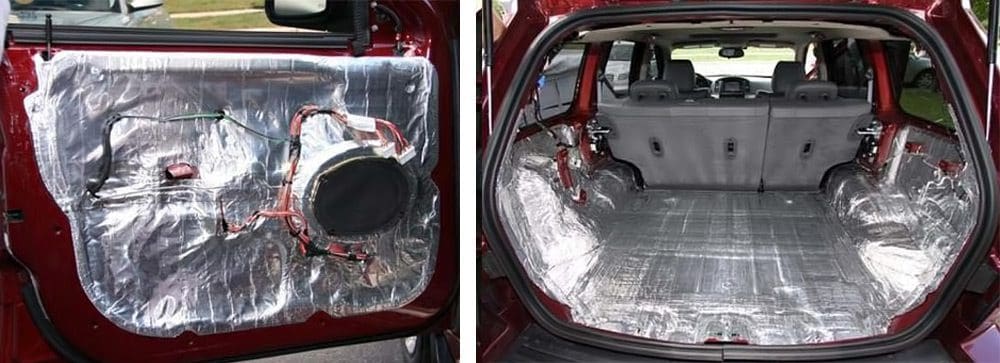
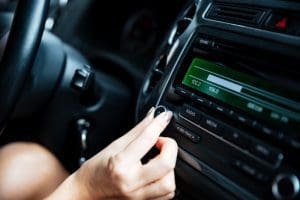 First, by simply reducing the background noise in your car or truck, you improve the effective signal-to-noise ratio of your stereo. What does this mean? Having less background noise makes it easier for you to hear the quiet parts of your music. Imagine if you were listening to a track at a volume level of 100dB. If you have background noise level of 95 dB, any portion of the song that is around the 95dB level will have to battle with the background noise to be heard. If you can reduce the noise level in your car to 90 dB, you can hear more of your music.
First, by simply reducing the background noise in your car or truck, you improve the effective signal-to-noise ratio of your stereo. What does this mean? Having less background noise makes it easier for you to hear the quiet parts of your music. Imagine if you were listening to a track at a volume level of 100dB. If you have background noise level of 95 dB, any portion of the song that is around the 95dB level will have to battle with the background noise to be heard. If you can reduce the noise level in your car to 90 dB, you can hear more of your music.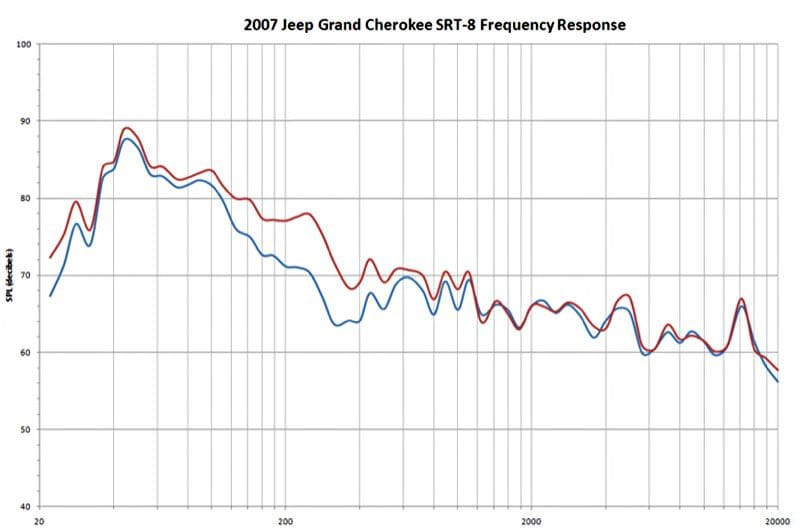
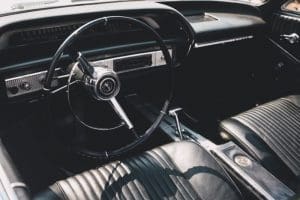 If you watch TV shows like “Detroit Muscle,” “Truck Tech” or “Overhaulin’,” you’ve undoubtedly seen the guys apply a thorough layer of sound deadening material to the floor of some of the coolest hot rods ever. Not only do these materials help keep your vehicle quiet, but they also help block heat from the road, engine, transmission and exhaust from heating up the interior of your vehicle. Dynaliner from Dynamic Control of North America, D-Mat from Design Engineering and the aptly named Heat Barrier from Thermo-Tec are specifically designed to prevent heat transfer into the interior of your vehicle.
If you watch TV shows like “Detroit Muscle,” “Truck Tech” or “Overhaulin’,” you’ve undoubtedly seen the guys apply a thorough layer of sound deadening material to the floor of some of the coolest hot rods ever. Not only do these materials help keep your vehicle quiet, but they also help block heat from the road, engine, transmission and exhaust from heating up the interior of your vehicle. Dynaliner from Dynamic Control of North America, D-Mat from Design Engineering and the aptly named Heat Barrier from Thermo-Tec are specifically designed to prevent heat transfer into the interior of your vehicle.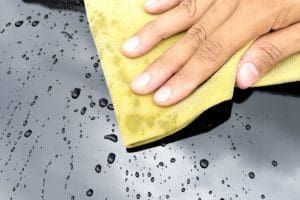 There are two common problems that occur with damping materials. First, they simply may not have a strong adhesive or they require extensive surface preparation to stay adhered to a panel. Some damping materials will stick to slightly dusty surfaces without any problems. The second and more important concern is that the material itself is thermally stable. You don’t want the deadening to peel off when it gets hot in the summer. We’ve heard of many cases where vehicle carpets and headliners have needed to be replaced because damping materials turned to a liquid and contaminated them.
There are two common problems that occur with damping materials. First, they simply may not have a strong adhesive or they require extensive surface preparation to stay adhered to a panel. Some damping materials will stick to slightly dusty surfaces without any problems. The second and more important concern is that the material itself is thermally stable. You don’t want the deadening to peel off when it gets hot in the summer. We’ve heard of many cases where vehicle carpets and headliners have needed to be replaced because damping materials turned to a liquid and contaminated them. People choose to have their car, truck and SUV
People choose to have their car, truck and SUV  The sun produces a great deal of energy. This energy includes radio waves, microwaves, infrared energy, visible light, ultraviolet rays, X-rays and gamma rays. UV radiation is broken down into three subcategories: UVA, UVB and UVC. UVC radiation has wavelengths between 100 and 280 nanometers and is blocked almost completely by the ozone, water vapor, carbon dioxide and oxygen in our atmosphere. UVB energy ranges from 280 to 315 nanometers. The atmosphere blocks roughly 90 percent of UVB energy. UVA ranges from 315 to 400 nanometers and, because of the high levels that reach the surface of the planet, is responsible for the majority of the skin damage we experience.
The sun produces a great deal of energy. This energy includes radio waves, microwaves, infrared energy, visible light, ultraviolet rays, X-rays and gamma rays. UV radiation is broken down into three subcategories: UVA, UVB and UVC. UVC radiation has wavelengths between 100 and 280 nanometers and is blocked almost completely by the ozone, water vapor, carbon dioxide and oxygen in our atmosphere. UVB energy ranges from 280 to 315 nanometers. The atmosphere blocks roughly 90 percent of UVB energy. UVA ranges from 315 to 400 nanometers and, because of the high levels that reach the surface of the planet, is responsible for the majority of the skin damage we experience. Our skin naturally produces a dark pigment called melanin when exposed to UV radiation. Melanin serves as a shield against UV damage. If the UV exposure is prolonged, the layer of cells in the upper skin layer is killed. The result is that your skin turns red in a process called erythema. Contrary to the term “healthy tan,” there is no such thing.
Our skin naturally produces a dark pigment called melanin when exposed to UV radiation. Melanin serves as a shield against UV damage. If the UV exposure is prolonged, the layer of cells in the upper skin layer is killed. The result is that your skin turns red in a process called erythema. Contrary to the term “healthy tan,” there is no such thing.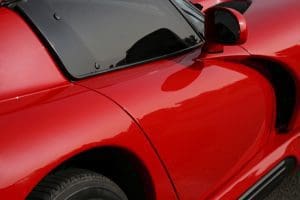 Automotive window films from companies like 3M, Llumar and Scorpion block between 95 percent and 99 percent of ultraviolet radiation. This protection is the equivalent of wearing a lotion sunscreen with an SPF rating of 1000. You get the same exposure to UV energy after 1,000 minutes as you would in 1 minute without the tint. That’s impressive.
Automotive window films from companies like 3M, Llumar and Scorpion block between 95 percent and 99 percent of ultraviolet radiation. This protection is the equivalent of wearing a lotion sunscreen with an SPF rating of 1000. You get the same exposure to UV energy after 1,000 minutes as you would in 1 minute without the tint. That’s impressive.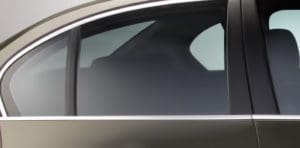 The answer to the question “Does darker tint protect better?” is both yes and no. Within a specific series of window films, you may find that their lightest shade of tint (say, a 50 percent tint) blocks 95 percent of UV energy where the darkest films (around 5 percent) blocks 99 percent. Both are quite excellent and offer exceptional protection.
The answer to the question “Does darker tint protect better?” is both yes and no. Within a specific series of window films, you may find that their lightest shade of tint (say, a 50 percent tint) blocks 95 percent of UV energy where the darkest films (around 5 percent) blocks 99 percent. Both are quite excellent and offer exceptional protection.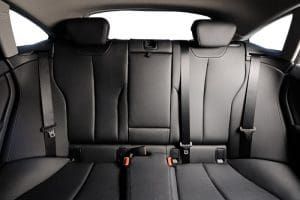 UVA and UVB energy are also responsible for causing the color of textiles and leather to fade. The process of breaking down the chemical bonds in the dyes used in these materials is called photodegradation. Dyed textiles are particularly susceptible to fading. Having your windows tinted with a quality film will help maintain the appearance and value of your vehicle for many years.
UVA and UVB energy are also responsible for causing the color of textiles and leather to fade. The process of breaking down the chemical bonds in the dyes used in these materials is called photodegradation. Dyed textiles are particularly susceptible to fading. Having your windows tinted with a quality film will help maintain the appearance and value of your vehicle for many years.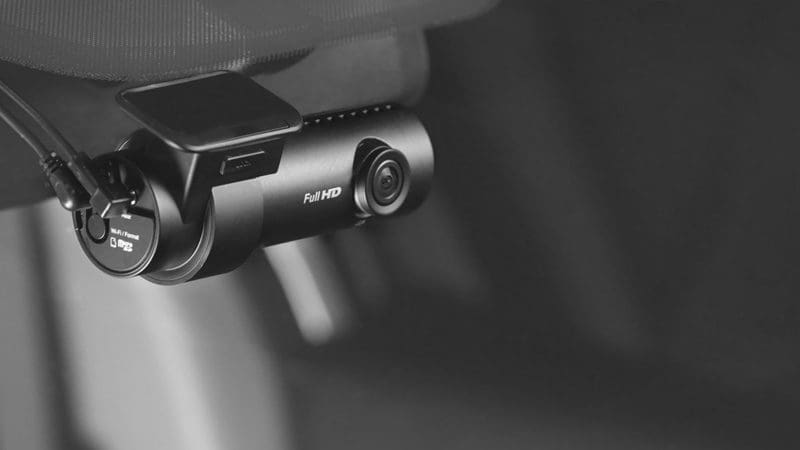 Have you ever been driving along and witnessed something that you wish you could have captured on video? It could be a car accident, strange or reckless driving behavior or just something interesting you want to share on social media. We most certainly can’t drive around with our smartphones in our hand, and when something worth recording does happen, we’ve usually missed the opportunity to capture the moment. A dashcam system is the solution. Read on to learn everything you ever wanted to know about
Have you ever been driving along and witnessed something that you wish you could have captured on video? It could be a car accident, strange or reckless driving behavior or just something interesting you want to share on social media. We most certainly can’t drive around with our smartphones in our hand, and when something worth recording does happen, we’ve usually missed the opportunity to capture the moment. A dashcam system is the solution. Read on to learn everything you ever wanted to know about 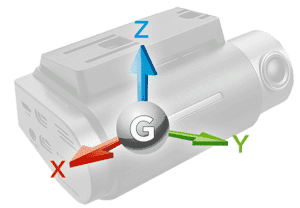 Dash camera systems are typically wired into the ignition circuit of your vehicle and begin recording as soon as you start your car or truck. There is no need to remember to press a button. Most camera systems include an integrated accelerometer that records forces in all three axes along with the video. This information can be used to show acceleration and braking and cornering forces, as well as to detect impacts in the event of an accident.
Dash camera systems are typically wired into the ignition circuit of your vehicle and begin recording as soon as you start your car or truck. There is no need to remember to press a button. Most camera systems include an integrated accelerometer that records forces in all three axes along with the video. This information can be used to show acceleration and braking and cornering forces, as well as to detect impacts in the event of an accident. As mentioned, most cameras start recording as soon as the vehicle ignition is turned on. Options in the setup menu allow the installer to configure the length, frame rate and the resolution of the video. Typical video lengths are one, three and five minutes. These short lengths make it easy to pick out certain events while ignoring long periods of uneventful driving.
As mentioned, most cameras start recording as soon as the vehicle ignition is turned on. Options in the setup menu allow the installer to configure the length, frame rate and the resolution of the video. Typical video lengths are one, three and five minutes. These short lengths make it easy to pick out certain events while ignoring long periods of uneventful driving. There are two basic styles of
There are two basic styles of 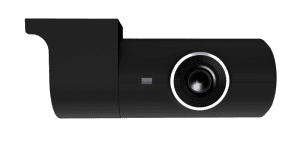
 Another popular camera option is called Parking Mode. When activated, the camera will operate even after the ignition is turned off. Parking Mode works in different ways for different cameras. Some record at a much lower framerate. Some monitor the image for changes (when a person approaches the vehicle, for example) and only start recording when a change is detected. Parking Mode is a great feature for people worried about someone breaking into or vandalizing their vehicle.
Another popular camera option is called Parking Mode. When activated, the camera will operate even after the ignition is turned off. Parking Mode works in different ways for different cameras. Some record at a much lower framerate. Some monitor the image for changes (when a person approaches the vehicle, for example) and only start recording when a change is detected. Parking Mode is a great feature for people worried about someone breaking into or vandalizing their vehicle. Beyond features, buying a dashcam is similar to buying any other video or still picture camera. The amount of information stored depends on the resolution of the camera system, the quality of the image sensor and the optics (lens quality) of the system. If you want a yes or no answer to who caused an accident, any recording system will work. If you are hoping to read a license plate or phone number from the side of a vehicle, you can never have too much resolution. It’s up to you to decide how much is right for your application.
Beyond features, buying a dashcam is similar to buying any other video or still picture camera. The amount of information stored depends on the resolution of the camera system, the quality of the image sensor and the optics (lens quality) of the system. If you want a yes or no answer to who caused an accident, any recording system will work. If you are hoping to read a license plate or phone number from the side of a vehicle, you can never have too much resolution. It’s up to you to decide how much is right for your application. Finally, we should discuss just why it is a great idea to have a dash camera installed in your vehicle. There’s no doubt that a good public shaming on Facebook for someone who cut you off is great entertainment, but the need to protect yourself against fraud and false accusations is very real. You may have seen a news report of video of someone jumping on the hood of a vehicle stopped at red light and claiming the driver hit them. Believe it or not, this does happen. Another popular scam is for a driver to back their vehicle into a stopped car or truck while at a red light. The driver of the offending vehicle will claim that you drove into them. One of the latest scams involves drivers being flagged down by a person on the side of the road. The person will claim they are out of gas and offer supposedly expensive jewelry as collateral in exchange for some money to get gas. If you decide to stop, be sure to let the person know you have a dashcam recording everything, including their license plate.
Finally, we should discuss just why it is a great idea to have a dash camera installed in your vehicle. There’s no doubt that a good public shaming on Facebook for someone who cut you off is great entertainment, but the need to protect yourself against fraud and false accusations is very real. You may have seen a news report of video of someone jumping on the hood of a vehicle stopped at red light and claiming the driver hit them. Believe it or not, this does happen. Another popular scam is for a driver to back their vehicle into a stopped car or truck while at a red light. The driver of the offending vehicle will claim that you drove into them. One of the latest scams involves drivers being flagged down by a person on the side of the road. The person will claim they are out of gas and offer supposedly expensive jewelry as collateral in exchange for some money to get gas. If you decide to stop, be sure to let the person know you have a dashcam recording everything, including their license plate. Did you know that teenage drivers are three times more likely to be involved in a motor vehicle accident than those who are 20 or older? With their relative lack of experience and the constant bombardment of distractions, it’s no wonder that young people are at risk. The aftermarket mobile electronics industry offers a wide variety of systems and solutions that can protect teenage drivers.
Did you know that teenage drivers are three times more likely to be involved in a motor vehicle accident than those who are 20 or older? With their relative lack of experience and the constant bombardment of distractions, it’s no wonder that young people are at risk. The aftermarket mobile electronics industry offers a wide variety of systems and solutions that can protect teenage drivers. While it’s certainly best practice to focus exclusively on the task of driving when behind the wheel, now and then, we need to take an important phone call. Bluetooth hands-free communication became a life-saver in the late 2000s, allowing a driver to talk with someone without having to hold the phone.
While it’s certainly best practice to focus exclusively on the task of driving when behind the wheel, now and then, we need to take an important phone call. Bluetooth hands-free communication became a life-saver in the late 2000s, allowing a driver to talk with someone without having to hold the phone.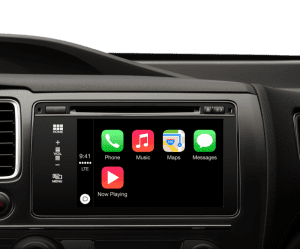 For the ultimate in smartphone integration, an aftermarket multimedia receiver with Apple CarPlay or Android Auto adds a wide variety of communication, information and entertainment options that can be accessed using voice commands. By simply pressing and holding a button on your steering wheel, you can ask these systems to place a phone call, send a text message, or search for an address and provide navigation instructions. The voice recognition technology built into a smartphone allows the driver to keep their eyes on the road and mirrors to ensure he or she is safe.
For the ultimate in smartphone integration, an aftermarket multimedia receiver with Apple CarPlay or Android Auto adds a wide variety of communication, information and entertainment options that can be accessed using voice commands. By simply pressing and holding a button on your steering wheel, you can ask these systems to place a phone call, send a text message, or search for an address and provide navigation instructions. The voice recognition technology built into a smartphone allows the driver to keep their eyes on the road and mirrors to ensure he or she is safe.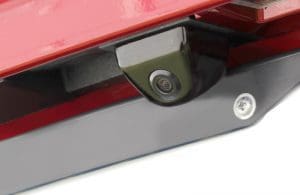 A backup camera system uses a compact camera to let you see an image of anything behind the vehicle. The image from the camera can be displayed on many factory-installed infotainment systems, a new rearview mirror with a built-in screen or an aftermarket multimedia receiver. The image appears automatically as soon as you put the transmission into reverse, so you don’t have to remember to press any buttons. Many video systems will support a secondary camera that faces forward on the vehicle. These second cameras are a great option for trucks, vans and SUVs whose large dimensions make them difficult to park.
A backup camera system uses a compact camera to let you see an image of anything behind the vehicle. The image from the camera can be displayed on many factory-installed infotainment systems, a new rearview mirror with a built-in screen or an aftermarket multimedia receiver. The image appears automatically as soon as you put the transmission into reverse, so you don’t have to remember to press any buttons. Many video systems will support a secondary camera that faces forward on the vehicle. These second cameras are a great option for trucks, vans and SUVs whose large dimensions make them difficult to park.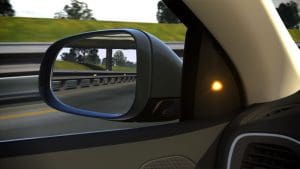 One of the biggest challenges for a new driver is traveling on the freeway. Keeping track of the position of cars and trucks around one’s vehicle can be very difficult. An aftermarket blind-spot monitoring system lets you know when someone is driving beside you and can dramatically reduce the chance of changing lanes when someone is in your way.
One of the biggest challenges for a new driver is traveling on the freeway. Keeping track of the position of cars and trucks around one’s vehicle can be very difficult. An aftermarket blind-spot monitoring system lets you know when someone is driving beside you and can dramatically reduce the chance of changing lanes when someone is in your way.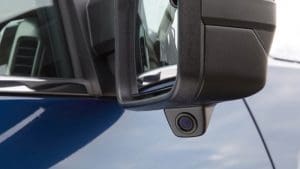 The second option for blind-spot monitoring is a camera system. In these systems, cameras mounted underneath your rear vision mirrors display an image of the area beside your vehicle when you activate the turn signal. Just like the backup camera systems, there are many options available to display the image from the cameras.
The second option for blind-spot monitoring is a camera system. In these systems, cameras mounted underneath your rear vision mirrors display an image of the area beside your vehicle when you activate the turn signal. Just like the backup camera systems, there are many options available to display the image from the cameras.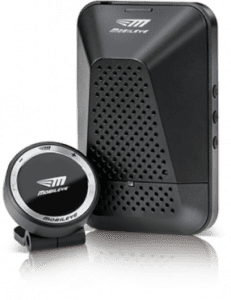 If you are looking for the absolute state-of-the-art in protection, look into the Mobileye series of products. The Mobileye 660 uses a precisely calibrated camera to monitor the area in front of the vehicle and alert the driver when you are leaving your lane, approaching another vehicle too quickly, or at risk of colliding with a vehicle or pedestrian approaching from the side. This is the same technology that Tesla uses in its AutoPilot system.
If you are looking for the absolute state-of-the-art in protection, look into the Mobileye series of products. The Mobileye 660 uses a precisely calibrated camera to monitor the area in front of the vehicle and alert the driver when you are leaving your lane, approaching another vehicle too quickly, or at risk of colliding with a vehicle or pedestrian approaching from the side. This is the same technology that Tesla uses in its AutoPilot system.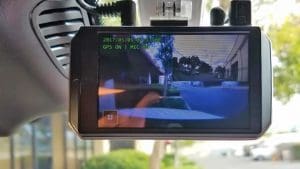 Another great option for a younger driver is to install a dash cam. A
Another great option for a younger driver is to install a dash cam. A  The last option to consider is a
The last option to consider is a